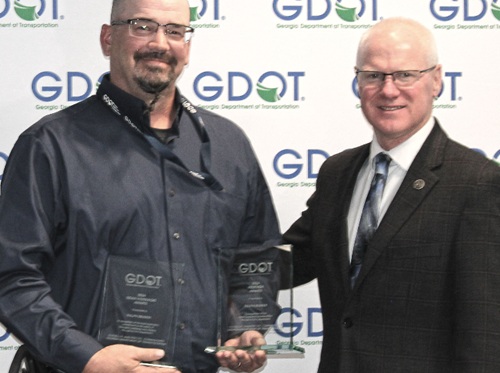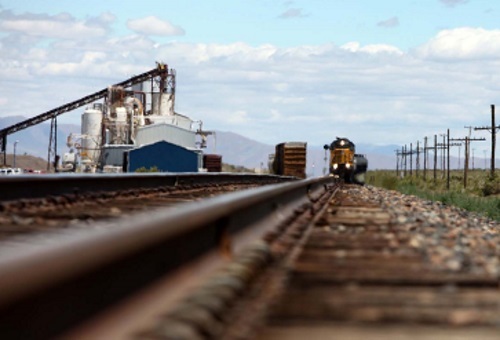The Nevada Department of Transportation is in the process of finalizing its Nevada State Rail Plan, which outlines potential new and enhanced railroad facilities to create a more efficient and sustainable statewide transportation network.
[Above photo by the Nevada DOT.]
The agency is also starting work on a new highway safety project in collaboration with the Regional Transportation Commission of Southern Nevada; a program supported with funding from the Federal Highway Administration’s Advanced Transportation and Congestion Management Technologies Deployment or ATCMTD program.
The Nevada DOT said in a statement that it would finalize the new state rail plan following public comment and a virtual statewide rail summit on Feb. 16; a summit designed to provide an overview of plan recommendations and strategies and gather stakeholder and public feedback.

The agency said it brought together more than 200 rail, economic development, and government leaders to analyze current and future rail needs, with its plan outlining more than 50 potential rail infrastructure projects to create economic advantages and transportation efficiencies.
The plan also outlines options to improve and integrate rail – which currently carries 23 percent of all Nevada freight tonnage, according to the Nevada DOT – through local and private sector investment in eight regions of the state.
“By optimizing freight distribution across Nevada, rail transportation can contribute to more reliable and safer roads,” explained Lee Bonner, the agency’s rail planning manager.
“Ultimately, the statewide rail plan will paint a blueprint for potential rail improvements to augment our existing freight systems and provide jobs, tax revenue and business opportunities, not to mention enhance mobility, traffic safety and the environment for Nevada’s families,” Bonner added. “It sets us on a path to fully utilize rail for an integrated and sustainable statewide freight transportation network.”

[On a related note, the New Jersey Department of Transportation recently issued more than $29 million in fiscal year 2021 Rail Freight Assistance grants to help fund 10 projects aimed at upgrading and repairing existing railroad tracks with environmentally friendly steel ties, installing new or upgraded switches, constructing a new drawbridge, and repairing or upgrading existing bridges and crossings. That $29 million in state grants will leverage an additional $23 million from railroad owners and operators, the agency added, bringing the total investment in those 10 projects to more than $52 million.]
Meanwhile, the Nevada DOT and RTC – along with the Nevada Highway Patrol, University of Nevada, and other partners – are using a $6 million ATCMTD grant from the FHWA deploying a variety of technologies to improve safety along a five-mile, $15 million expansion of Las Vegas freeway that carries approximately 230,000 vehicles daily.

Those technologies include wrong-way sensors that alert drivers immediately if they are traveling in the wrong direction; detection sensors in Highway Occupancy Vehicle lanes to collect vehicle occupancy data; and overhead signs that warn motorists about incidents, speed reduction, and lane closures ahead to mitigate crashes resulting from sudden braking.
“[We are] committed to leveraging every tool available, including emergency technologies, to further our mission of making Nevada safe and connected,” noted Kristina Swallow, Nevada DOT director, in a statement. “Nevada DOT is proud to work with its local, state, and federal partners in finding creative and high-tech solutions to improve driver efficiency and traffic flows while reducing secondary crashes.”
“As the traffic management agency for the region, it is essential that we continue to collaborate with the state and local governments and our university to employ emerging technologies to improve safety, mitigate traffic and help save lives,” added M.J. Maynard, RTC chief executive officer.
“This grant will enable us to work closely with our long-standing partners to expand our footprint in informing motorists, emergency responders and traffic technicians about incidents in real time,” Maynard added. “We are grateful to our federal delegation and community partners for their continued support of these efforts, as we all work together to reduce the number and severity of crashes on our valley’s roadways.”
 States
States
Georgia DOT Foreman Receives Two Heroism Awards
January 2, 2026 States
States

